The discovery of a worm measuring the length of a snake at the base of Sumaco Volcano in Ecuador in 2009 was a remarkable finding.
The worm, approximately 5 feet (over 1.5 meters) long, was an extraordinary discovery for the scientific community. This finding garnered significant interest among biologists who were eager to study the creature and understand its behavior, habitat, and potential role in the ecosystem.
The discovery of this species, dubbed the “giant worm”, was made by a team of researchers from the University of Quito in Ecuador.
The research team was conducting a biodiversity survey in the region when they stumbled upon this organism. They were astonished to find this earthworm species, as it had not been previously recognized by science.
The discovery of this worm represents an important scientific breakthrough and has since attracted considerable attention and discussion in the scientific community. Researchers have been investigating it deeply, trying to understand its physiology, ecology, and behavior.
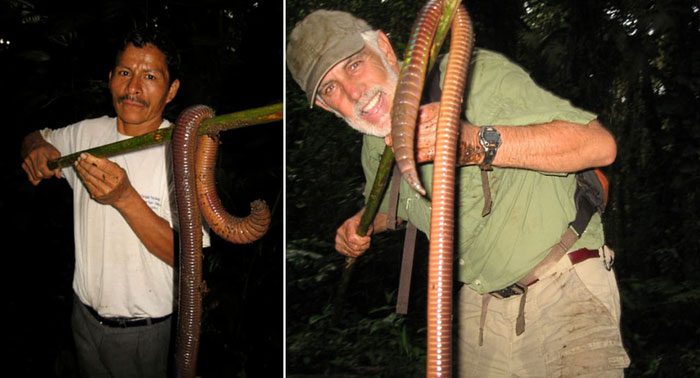
The worm is 1.5m long and weighs at least 0.5kg.
Physical Characteristics of the Giant Worm
The giant worm found at the base of Sumaco Volcano in Ecuador is a remarkable organism with several unique physical characteristics. The worm is about 5 feet long, making it one of the longest worms ever recorded. Its body is long and slender, exhibiting a distinct brown color.
Its body consists of many segments, each covered with tiny, stiff bristles. These bristles are believed to be used for gripping surfaces, allowing the worm to move easily through the soil and vegetation.
The head of this earthworm species is also quite distinctive, featuring two pairs of antennae and a small mouth located at the front of its body. Its mouth is surrounded by a ring of sharp teeth, used for capturing and consuming small insects as well as other invertebrates.
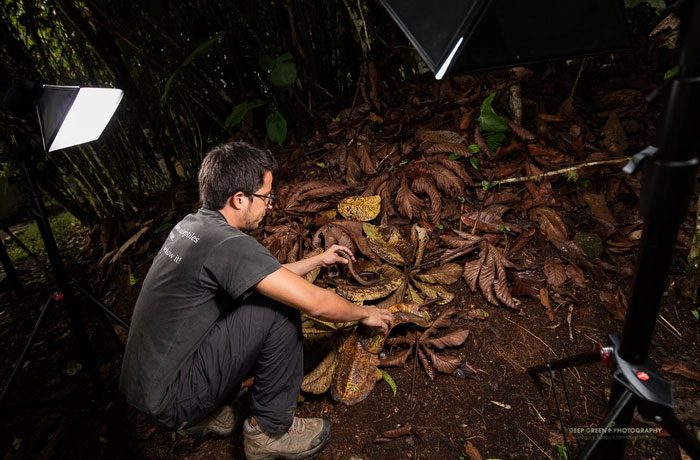
Entomologist Torres states that this worm can grow up to a maximum length of about 2.1m.
The giant worm found at the base of Sumaco Volcano in Ecuador is believed to live underground, where it burrows through the soil and feeds on small insects and other invertebrates. They are most active at night when they emerge from their burrows to forage.
The burrows of this worm species are thought to be quite deep and complex, featuring numerous tunnels and chambers. This worm species is known to be a solitary creature.
Their habitat is also quite unique. They are found at the base of Sumaco Volcano in Ecuador, where the soil is rich in nutrients and the vegetation is dense. The habitat of this worm is believed to be an essential part of the ecosystem, as it helps aerate the soil and decompose organic matter.
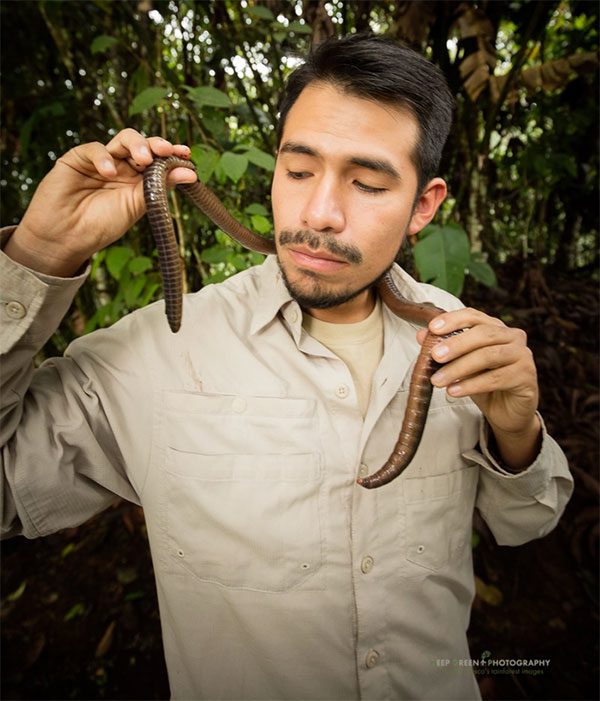
This worm lives in nutrient-rich soil and dense vegetation.
Impact on the Ecosystem
The discovery of the giant worm at the base of Sumaco Volcano in Ecuador has raised questions about its potential impact on the ecosystem. Researchers are investigating the role of this worm species within the ecosystem and how it interacts with other species.
One potential impact of the giant worm on the ecosystem is its ability to aerate the soil. The burrowing activities of the worm are believed to help improve soil structure and promote the growth of vegetation in the area.
The role of the giant worm in the decomposition of organic matter is also significant. The foraging activities of the worm help break down plant remains, releasing nutrients back into the soil and fostering the growth of new vegetation.
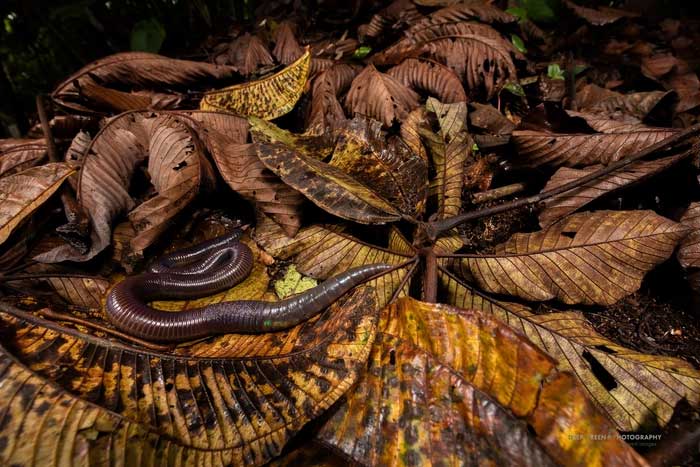
The role of the giant worm in the decomposition of organic matter is also very important.
The discovery of the giant worm at the base of Sumaco Volcano in Ecuador in 2009 is a significant scientific breakthrough. The unique physical characteristics, behavior, and habitat of this worm species have attracted considerable interest and discussion in the scientific community.
Researchers are studying the physiology, ecology, and behavior of the giant worm to gain a better understanding of its role in the ecosystem. The worm’s ability to aerate and break down soil…
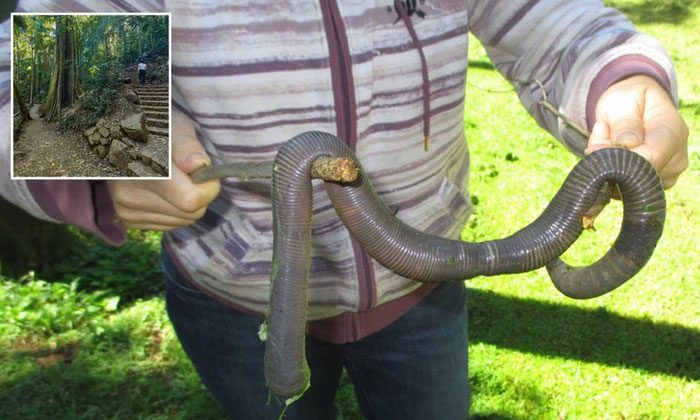
In Australia, there is another species of giant earthworm known as Gippsland. Their diet consists of fungi, bacteria, algae, and microbes. These giant Gippsland worms use their muscular head to burrow deep into the ground, reaching depths of up to 1.5 meters. As a result, they are rarely seen on the surface and are considered one of the hardest organisms for humans to catch. In fact, these worms only emerge when their burrows are flooded due to heavy rains. The Gippsland Giant Earthworm (Megascolides australis) is one of the hardest organisms to catch but also one of the most “fascinating” in the world. It can survive in environments that have been completely altered by humans and is very rarely seen on the surface. These giant earthworms can only be found in an area of 150 square miles, which was once covered by dense rainforests but has now been entirely transformed into agricultural land. The Bass River Valley in South Gippsland, Victoria, in southeastern Australia, is home to the largest earthworm species in the world, which can grow up to 2 meters long. This “hard-to-catch” earthworm was first discovered in the 1800s when railway workers accidentally found one. They thought it was a type of snake and took it to consult a professor at the University of Melbourne. The professor confirmed that it was actually an oversized earthworm. Since then, specimens of earthworms longer than one meter have been found, and some giant worms have been captured measuring up to 2 meters. Although the largest earthworm in the world recorded in the Guinness Book of Records is a specimen from South Africa measuring 6.7 meters belonging to the species Microchaetus rappi, the average length of this species is only about 1.8 meters (6 ft) in the wild. Therefore, to date, the Australian earthworm Megascolides australis is still considered the largest earthworm in the world. |


















































